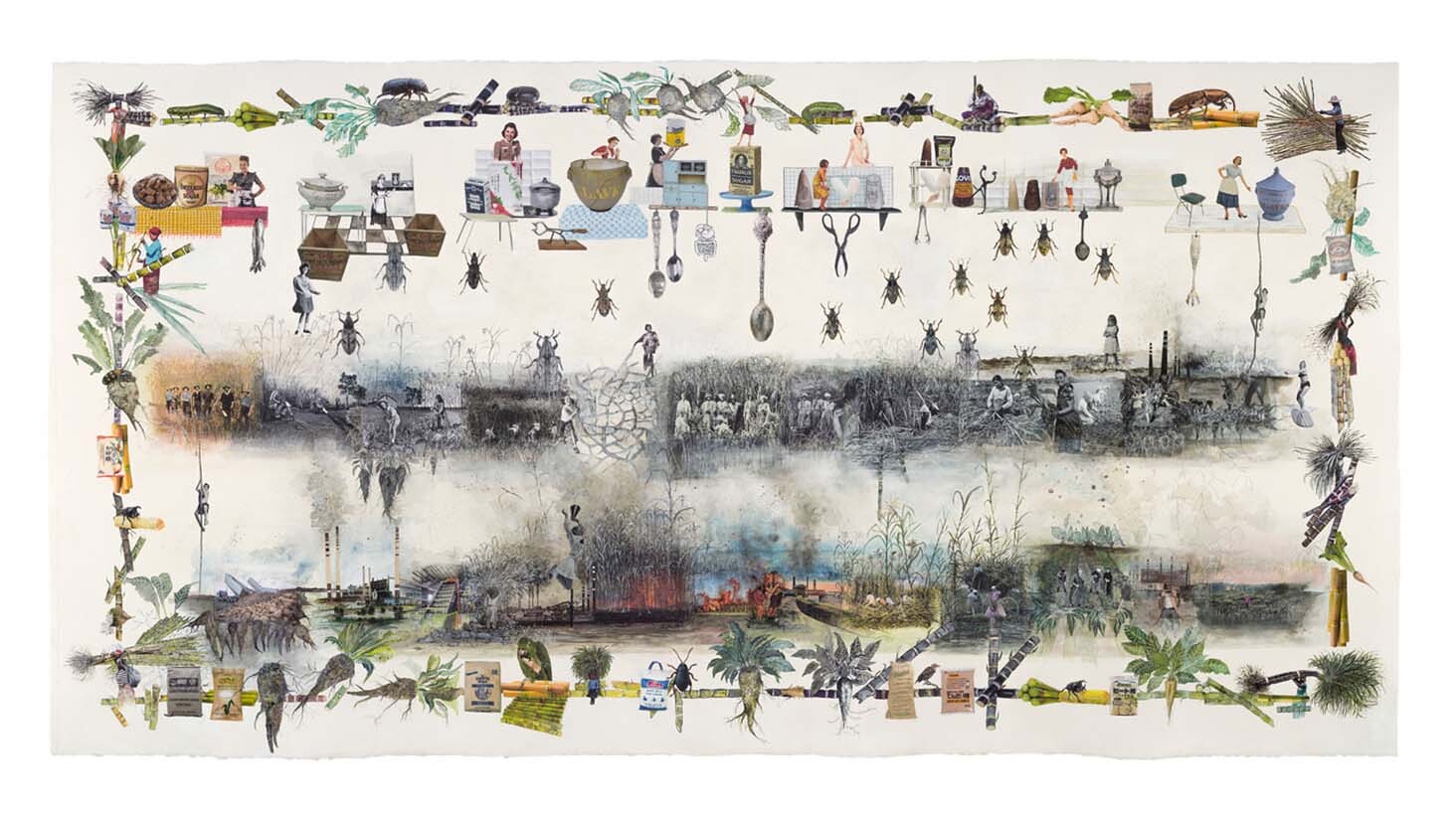Will there still be sugar after the rebellion?
August 21–October 31, 2021
Námestie SNP 12
811 06 Bratislava
Slovakia
Artists: Melanie Bonajo, Gerard Ortín Castellví, Anetta Mona Chişa, Annalee Davis, Ferenc Gróf with Jean-Baptiste Naudy, Oto Hudec, Marzia Migliora, MyVillages, Ilona Németh, Uriel Orlow, Prabhakar Pachpute, Alicja Rogalska
Potential Agrarianisms sets out to diversify agriculture and pluralise its histories, recovering suppressed peasant pasts and activating their unrealised possibilities, destabilising urban-rural dichotomies, repairing the disconnect with the natural world and restoring caring and reciprocal relationships to the soils and plants that nourish us. Uncovering its origins in colonial plantations and embeddedness in the operations of extractive capitalism, the exhibition explores alternatives to the globalised system of industrial agriculture with its patent formula of chemical additives, noxious pesticides and genetically modified seeds, vigorously cultivated with fossil fuel machinery. The rediscovery and reimagining of attentive relations to the land challenges the relentless expansion of intensive farming which promised a new age of abundance, but by depleting the natural vitality of the soil, endangering biodiversity and contributing to climate change now undermines its own aims. Drawing on feminist, postsocialist, black, indigenous and beyond-human perspectives, the artists in this exhibition propose reparative and future oriented land reforms for a just social and ecological transition.
The planetary scale of the transformation of agricultural methods and rural life since the colonisation of the Americas and onset of industrial modernity is epitomised by the parallel trajectories of sugar cane and sugar beet, whose potential histories are reactivated by artists in the show. Decolonial theorist Ariella Aïsha Azoulay’s observation that “potential history does not mend worlds after violence but rewinds to the moment before the violence occurred and sets off from there” also speaks to the entwined social and environmental predicaments of the land. Artists in the exhibition rewind to the moment before the establishment of monocultural plantations, before a patchwork of biodiverse farms was ploughed over, erasing centuries of situated plant knowledges, and before genetically modified corn replaced varieties cultivated by First Nations to suggest that another agrarian path was and is still possible. These art practices infer that in order to establish reparatory procedures, it is necessary to understand the complexity and interconnectedness of agrarian struggles in which all terrestrials, the flourishing of plants, the vitality of the soil and wellbeing of Earth are at stake.
Ilona Németh: Eastern Sugar
The exhibition Potential Agrarianisms is the climax of the major European project Eastern Sugar, which is realised by the Slovak National Gallery in cooperation with international partners and Kunsthalle Bratislava, supported by the Creative Europe programme of the European Union. Along with three other international exhibitions, the project also resulted in the publication Ilona Németh: Eastern Sugar, which was edited by Maja and Reuben Fowkes and co-published by the Slovak National Gallery with Sternberg Press in English and Absynt Publishers in Slovak. Through critical texts, conversations and artistic interventions, the book restores complexity to the history of the rapid decline of the Slovak sugar industry and by extension the wider social and economic infrastructures of transition in Central Europe. It takes as its starting point artist Ilona Németh’s extensive research into the history of sugar production in the region, from its beginnings in the early nineteenth century, when northern sugar beet emerged as a competitor to southern sugar cane, to the social impact of the rapid decline of the industry in the era of peak globalization. For more information, visit here.
The Eastern Sugar project is co-funded by the Creative Europe Programme of the European Union and supported by the Visegrad Fund and Erste Stiftung. The exhibition is supported by Mondriaan Fonds and Pro Helvetia.

